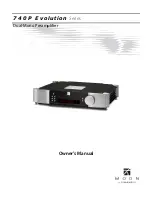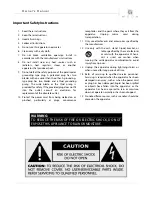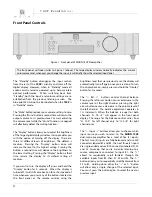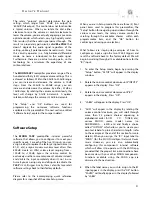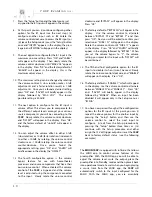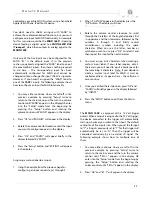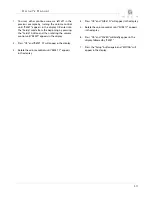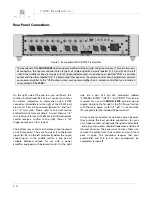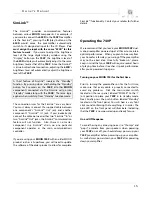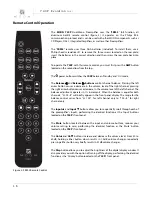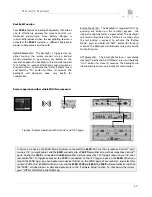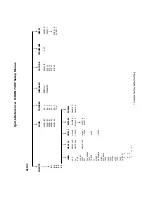
740P Evolution
Series
14
Rear Panel Connections
Figure 2: Rear panel of MOON 740P Preamplifier
The rear panel of the
MOON 740P
dual-mono preamplifier will look similar to Figure 2 (above). There are two rows
of connectors; the top row contains three (3) pairs of single-ended RCA inputs labeled S1, S2, and S3 on the left
side; In the middle section are two pairs (2) of single-ended outputs. One output pair, labeled “VAR” is a variable
output and the other, labeled “FIX” is a fixed output that bypasses the volume control. You should always connect
your power amplifier to the “VAR“ output unless your power amplifier has its volume control that you intend on
using instead of the
740P
’s.
On the right side of the top row you will find a full-
function bi-directional RS-232 port control and status
for custom integration or automation using a DB9
connector. Immediately to the right of the RS-232 port
are two (2) “SimLink” connectors labeled “in” and “out”
on 1/8” mini jacks. Please refer to the next section
entitled SimLink for more details. As well, there’s a 1/8”
mini-jack input for use with aftermarket infrared remote
control receivers. Further to the right, there’s a 12V
trigger output on a 1/8” mini-jack.
The bottom row contains all balanced inputs/outputs
on XLR connectors. There are two pairs (2) of balanced
inputs (B1, B2) on the left side directly below the single-
ended inputs. In the middle section is one pair of
variable balanced outputs for use with a power
amplifier equipped with balanced inputs. On the right
side are a pair of 4-pin XLR connectors labeled
“EXTERNAL SUPPLY” “INPUT 1” and “INPUT 2” which are
reserved for use with
MOON 820S
external power
supply
.
Finally, to the far right is the “AC Power” section
with the main power switch (“0”=off, “1”=on) and the
IEC receptacle for the included AC power cord.
All rear panel connectors have been chosen because
they provide the best possible connections for your
unit. A poor contact will degrade the signal substantially
- and plugs and sockets should all look clean and free of
dirt and corrosion. The easiest way to clean them is to
remove the cables from their sockets and push them
back in again. This procedure requires that your
preamplifier and the rest of your components be
completely turned off.

